Frank Pick, who was born in 1878 and died in 1941, is said to have had “as much influence on London’s development in the twentieth century as Haussmann had on that of Paris in the nineteenth”.1
In 1968 Sir Nikolaus Pevsner went further. He said that Pick had been “the greatest patron of the arts whom this century has so far produced in England, and indeed the ideal patron of our age.”
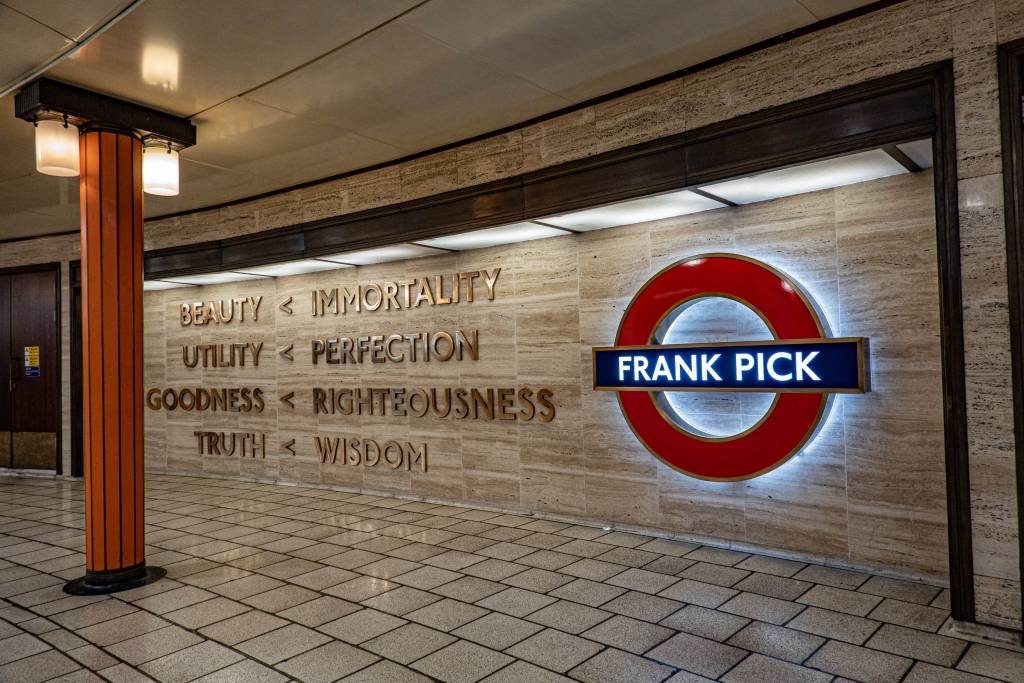
It was Pick, first as commercial manager of the Underground Electric Railways Company of London from 1912, then as managing director of the Underground Group, and finally as chief executive officer and vice-chairman of the London Passenger Transport Board from 1933 to 1940, who created, branded and built the infrastructure of transport in London as we know it today.
Corporate indentity
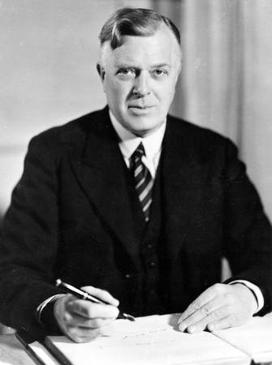
Pick had a keen interest in design and its application in public life. He was responsible for the development of the London Underground’s corporate identity, which has lasted over a century.
He had the knack of commissioning the best designers, commercial artists and graphic designers in order to create a highly recognisable brand, including the first versions of the roundel and typeface still used today.
It is not often recognised, but Pick’s adoption of the common advertising policy, which strictly controlled the size, appearance and placing of commercial messages, completely transformed the network which had become indescribably haphazard.
Harry Beck
One of the greatest innovations in London Transport’s corporate identity during Pick’s term was the tube map. This was a homegrown affair, rather than the fruit of an external consultant.
Harry Beck was an engineering draughtsman at the London Underground Signals Office and worked on his revolutionary design in his spare time. Previous maps had been based on accurate geographical representations, resulting in central stations being crowded while outer stations were confusingly widely spaced out.
Beck’s genius was to introduce a schematic, then quite revolutionary, which gave equal weight to all stations, exaggerating the size of the busy central area and minimising the widely-spread halts in the suburbs. The Beck map was an instant success and it became yet another vital component in Frank Pick’s transformation London’s transport branding.
Charles Holden
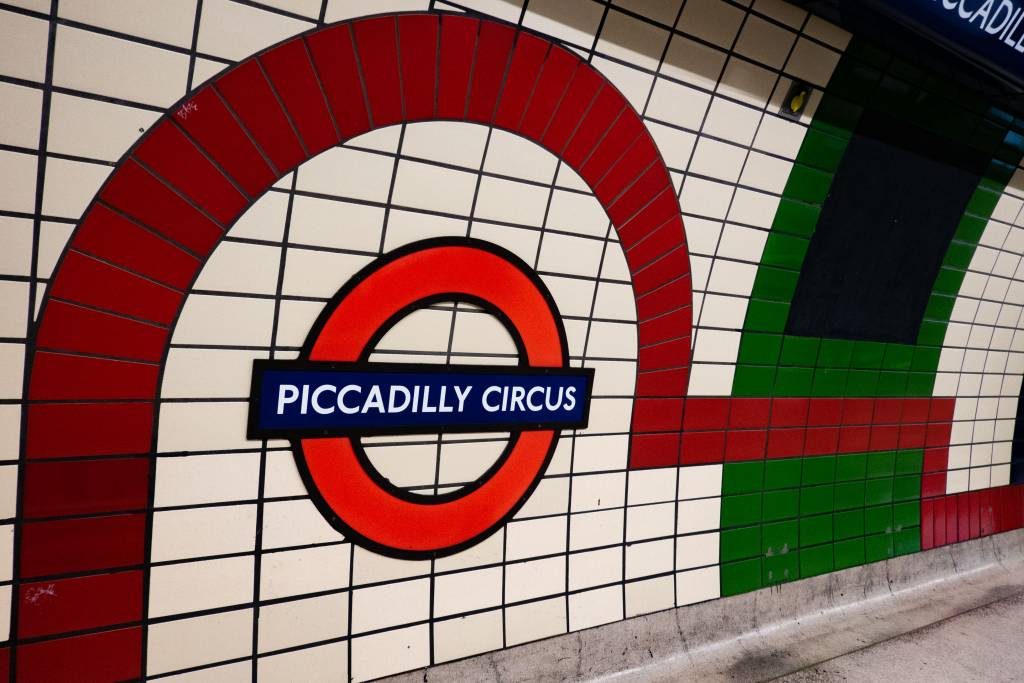
It was outside consultants, however, who helped Pick stamp his unique sense of industrial design on the capital. Perhaps the most significant of these was the modernist architect Charles Holden who was commissioned by Pick in 1924 to design new stations on the Underground network.
From
The network attracted admiring experts from all over the world. Holden’s iconic stations are to be found throughout Greater London, but mainly in the suburbs, from South Wimbledon to Cockfosters, from Chiswick Park to Gants Hill.
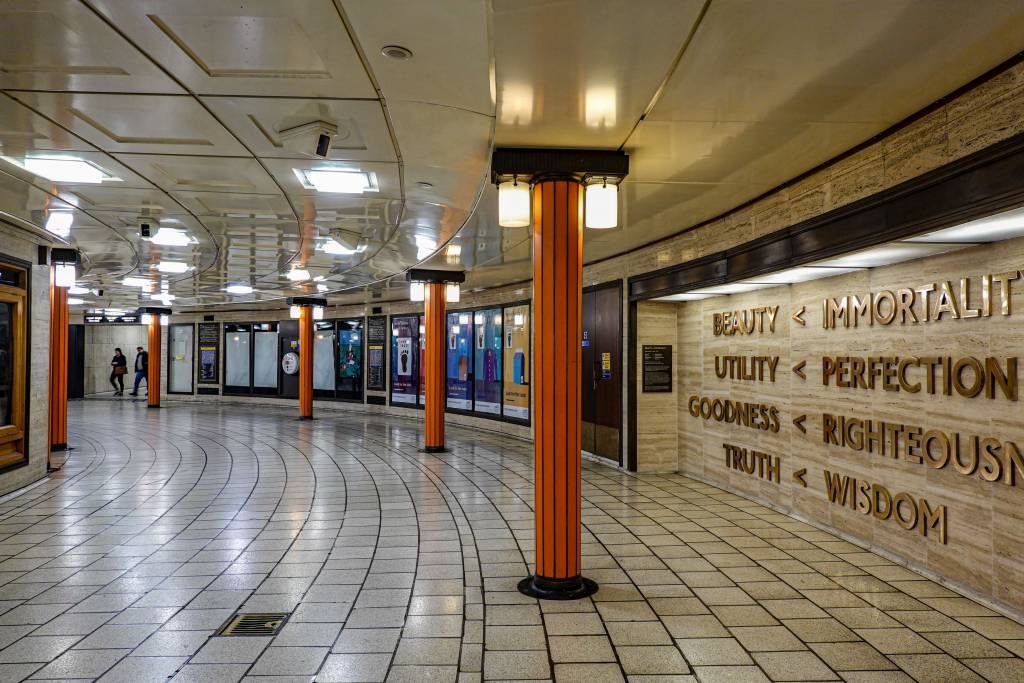
One of Holden’s greatest triumphs, in my opinion, is a station you cannot even see, at least not from ground level. The great roundel underneath Piccadilly Circus is one of the finest examples of 20th
Apart from Holden’s buildings, perhaps the most enduring legacy of Frank Pick’s 34-year reign of influence on London’s transport network is the distinctive typography and branding he championed.
From as early as 1909 Pick began to introduce the bulls-eye logo and “Underground” brand on posters and station buildings. Not wholly satisfied, he changed tack in 1916 by deciding to
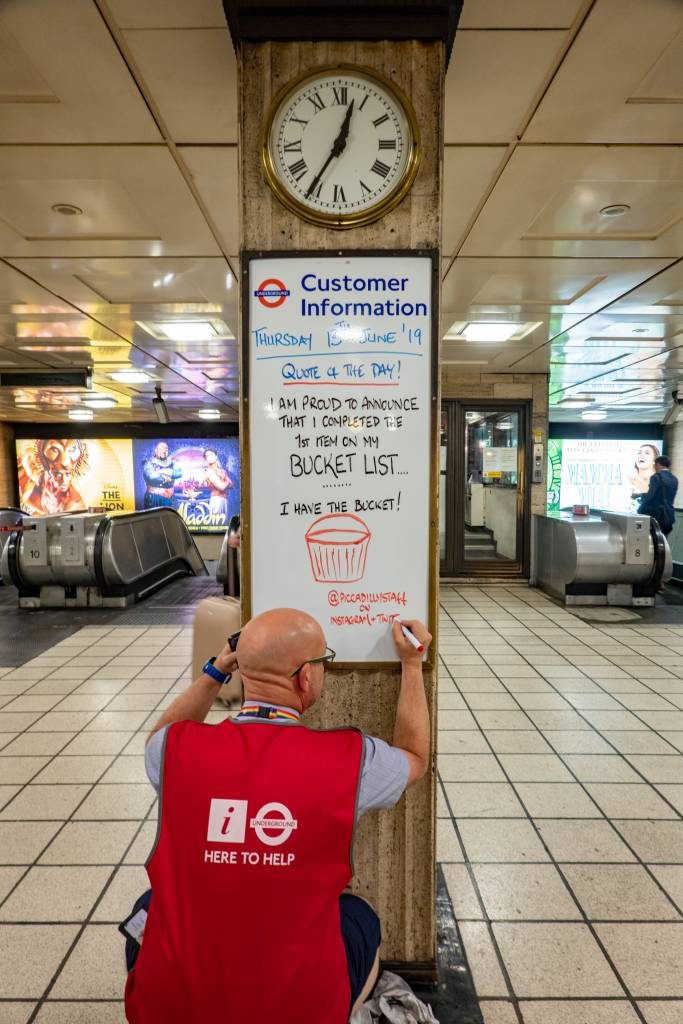
Edward Johnston
The redesign was executed by calligrapher and typographer Edward Johnston and was adopted throughout the network in 1919. It has since come to symbolise London and is one of the most recognised graphical artefacts in the world.
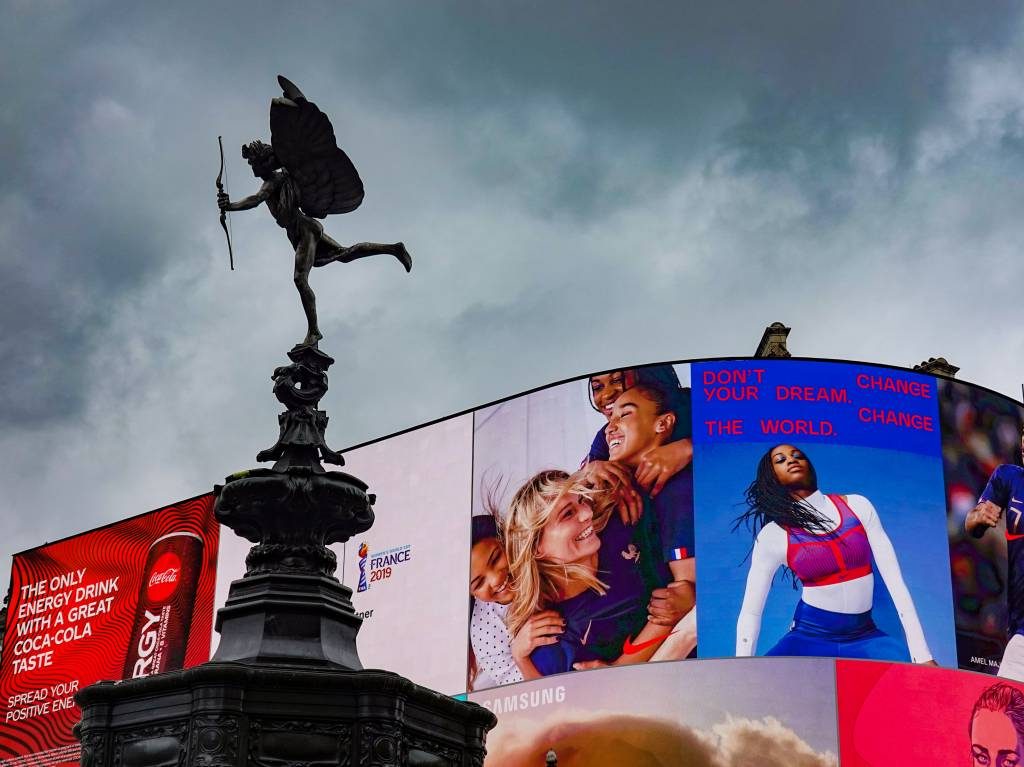
Edward Johnson had also been responsible for the distinctive London Transport typeface. It was commissioned by Pick in 1913 and was intended for use on signage and advertising in an attempt to make company branding stand out from the miscellaneous typography of advertising.
He told Johnson that he wanted a typeface that would ensure that the Underground Group’s posters would not be mistaken for advertisements. It should have, he said, “the bold simplicity of the authentic lettering of the finest periods” and belong “unmistakably to the twentieth century”.
The decision to choose Edward Johnson was another brilliant decision by Frank Pick. So successful has the Johnson typeface become that, with very minor modifications, it is still the public face of London Transport after over a century.
Legacy
Frank Pick’s name is not as well known outside the capital as it ought to be. Yet he had a profound influence on the development of the current integrated network, the synergy of Underground, Overground, bus and mainline rail services throughout the capital.
Wherever you go in London you cannot escape Pick’s influence, nor the very visible legacy of his brilliant protégés, Edward Johnson and Charles Holden. And, we should not forget, Harry Beck’s map set the standard for urban transport schematics throughout the world.
- Sir Peter Hall, urban planner ↩
- Images by Mike Evans, Sony RX100 VI

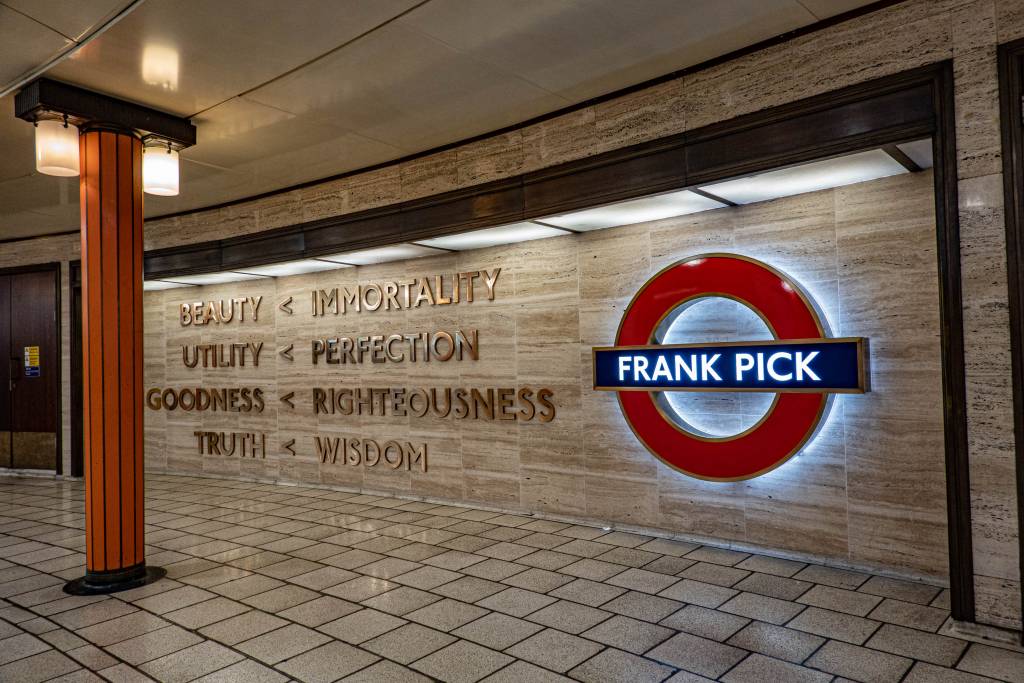
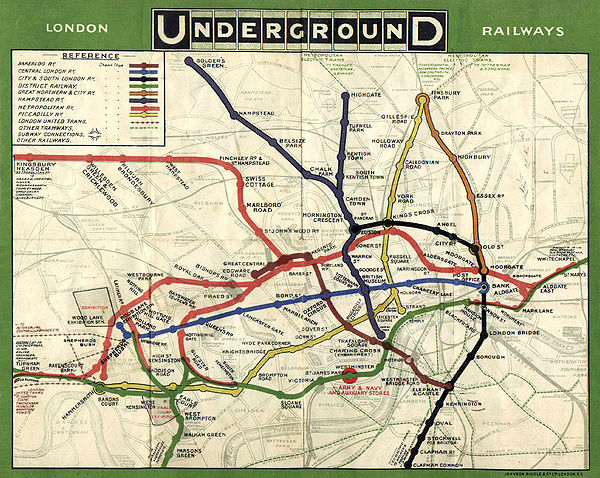
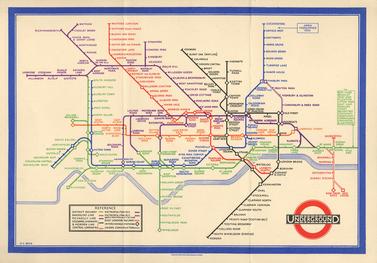
During his lifetime Frank Pick met with Adolf Hitler, Joseph Stalin and Winston Churchill – not too many people have achieved that trifecta.
It’s an interesting question to ask but if you were to redesign all the work Frank Pick commissioned which modern day designer would you ask and what might it look like? Jonny Ive from Apple? Philippe Stark? Make your choice and imagine the logo and the Tube map…
Well, I suppose *I* would have to invite Sir Jony to the designing board because of my long association with his products. But would Cockfoster’s station end up looking like a giant AirPod?
I do have two Philippe Stark lamps as well, but am not as enamoured with them as with Apple’s products. I rather suspect, though, that Lord Foster of Thames Bank would get the job. What do other readers think?
Long ago – well, of course it was long ago! – in the early days of ‘educational computing’ when RM (Research Machines) sold the lion’s share of school and college computing machines, I went to the Royal College of Art to see what they were doing with computers.
The head of their computer and design department said that he’d given students the job to reproduce Harry Beck’s tube map ..but no-one could work out how to make several different coloured tracks curve around, through, say, 90 degrees, and stay parallel with each other – like, say, the yellow and green Circle and District tube lines. No-one could think of a way to get parallel lines to curve around alongside each other ..you know; different radii following the same curve.
It took them about a year to try and draw Harry Beck’s lines by computer ..but I think, in the end, they just gave up!
Presumably this is now possible — I can’t imagine TfL drawing those maps by hand.